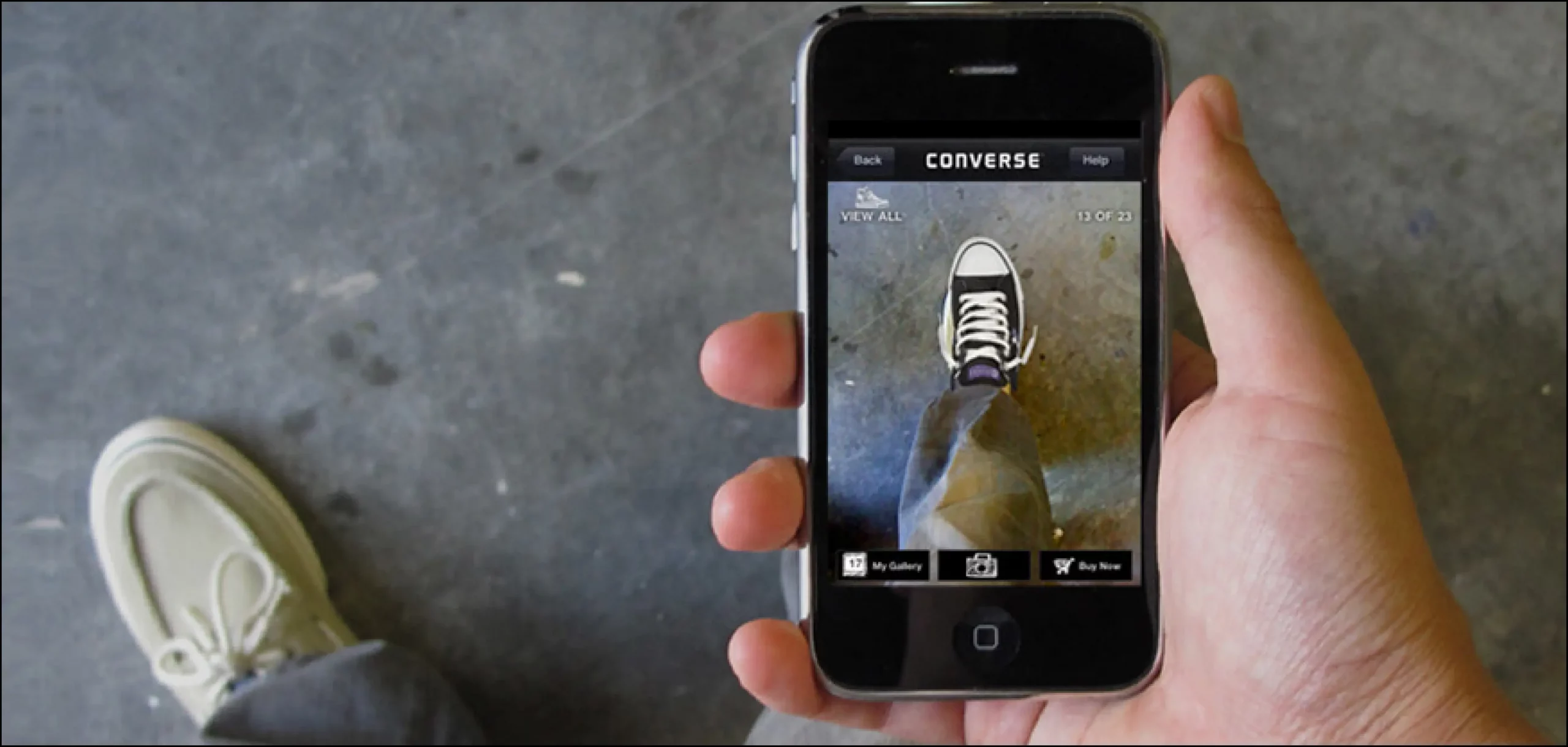The retail industry is one of the few heavily invested in transformative technology in recent years.
Of all these technologies, AR in retail is the most effective for improving offline and online sales.
With a mere adoption rate of 2% among retailers, it’s considered by most as a “sleeping giant” that’s about to revolutionize the retail industry.
You can own one in a breeze by partnering with a knowledgeable augmented reality development company.
Are you a business owner, startup founder, or corporate executive that needs AR for retail?
If yes, then keep reading as we’ll discuss the following:
- Examples of AR solutions in retail
- Benefits of AR in retail
- How to get started with your AR solution
- And more!
Before discussing benefits, let’s first provide you with some examples of AR in retail:
Examples of AR Solutions in Retail
Check out some examples of AR in the retail industry:
Example 1: IKEA Place
Ikea Place is an app built in 2017, and it’s a product from the collaboration between Ikea and Apple.
It superimposes graphics of IKEA products in a real-world environment.
Based on figures from IKEA, this app gives shoppers 98 percent satisfaction in the shopping experience.
Example 2: The Gap
Gap created an AR-powered app called DressingRoom.
The app lets users try on different outfits on a virtual mirror.
This reduces the time expended in trying on different outfits in a fitting room.
Example 3: Converse
The Converse Sampler App lets users virtually test their product in real time.
To use this app, just snap the Converse shoe you intend to buy, and it’ll bring up the product details.
There’s also an in-app feature that allows you to share photos with family and friends for comments.
Example 4: BIC
BIC came up with an idea to provide students with a fun way to draw sketches.
Its AR-enabled accessory lets students scan drawn sketches and superimpose fun graphics on them.
The app makes sketching an exciting activity for students.
Example 5: L’Oreal
L’Oreal is a popular cosmetic brand that recently owns the ModiFace AR app.
The application helps customers virtually superimpose a preferred cosmetic on their faces.
This idea was well received by their customers, and it increased their sales by 8 percent.
Now that we’ve discussed some examples of AR in retail let’s discuss the benefits:
Benefits of Augmented Reality to the Retail Industry
The primary reason for AR’s high acceptance is its benefits.
Some of Augmented Reality benefits entail:
#1. Enhanced In-store Experience
Augmented Reality can improve in-store experiences in varying ways.
For one, it creates interactive product demonstrations to show customers how a product works.
For example, Lowe’s AR app allows customers to view how a piece of furniture will look in their home.
Additionally, visual try-ons help customers try on accessories and clothes.
An example of a virtual try-on app is H&M ar-powered application.
The app, which helps customers try on clothes virtually, is famous for reducing the time customers spend in-store.
Another way AR improves the in-store experience is by making waiting time fun.
How?
You can use Augmented Reality to create games and challenges for customers.
Macy’s AR-powered game lets visitors find virtual balloons hidden in their store.
This gives customers a memorable experience.
#2. Improved Customer Insights
AR enhances customer insight by analyzing customer interaction with products and their features.
It highlights unique selling points by understudying how customers interact with the item.
Business owners can then use this information to improve customer experience, marketing strategies, and design.
They can also use insights from AR to customize services and products to meet the preferences and needs of users.
This ultimately improves both customer loyalty and sales.
#3. Increased Brand Awareness
Augmented Reality improves brand awareness as it uses user-appealing items to attract prospects.
AR helps retailers create engaging product demonstrations, which research has found to be one of the most effective forms of marketing.
This kind of demonstration improves the consumer base’s knowledge of your product in a fun way.
This results in increased brand awareness and product loyalty.
Additionally, retailers can use AR for immersive marketing campaigns that capture users’ attention.
For example, you can use AR to create virtual product launches for online audiences.
#4. It Improves Online Shopping Satisfaction Rate
Online shopping, for many, is a highly distrusted activity.
This is partly due to the possibility of falsification of online reviews and a need for concrete evidence of the quality of the product.
Although over 60% of users still buy online, AR can further help improve trust in the industry.
AR revolutionizes this via DIY home renovation tests and the ability of prospective customers to try out what they want to purchase.
How so?
Consider working on a home renovation, and you’re not sure of the perfect paint for your wall.
What if you could virtually try the paint on the wall? Yes, this is a possibility and has, in fact, been done.
An example of an app with this feature is the Dulux visualizer app.
Some apps also allow you to virtually position household furniture and electronics in your home to see how they’ll fit before purchasing.
AR, in conjunction with other technologies, ensures that customers try out items on their bodies without visiting a physical store.
It eliminates spending time in considerable queues to test a newly launched product.
#5. Simplifies Inventory Management
One of the major pros of Augmented Reality is that it helps retail employees to be more effective by making inventory management more accurate and less labor-intensive.
Through indoor navigation, real-time barcode scanning, object recognition, and other tools that aid retail management.
These features make it easy to keep tabs on product availability.
You can also inculcate AR with ML algorithms to track surges in demand and predict when you’ll exhaust products in your store.
#6. Find Your Product Faster
Augmented Reality influences how customers shop for items.
AR does this via visual search and in-store navigation.
For visual search, customers point their smartphones at the product’s barcode for a detailed item description.
This eliminates the need for reading the description on labels or asking sales representatives for questions.
Another way it helps find products faster is through in-store navigation.
That is, retail stores can provide an interactive map of the outlet, showing the product’s location and directions to reach them.
This is particularly handy in sorting through large stores.
#7. Reduced Return Orders
AR technology can help reduce return orders by giving customers detailed product knowledge before purchasing.
For example, AR lets customers test clothes virtually.
Thus, it reduces the likelihood of purchasing an unfit product.
Customers can also view items in 3D and have a better feel of their features, shape, and size.
AR can also provide customers with history-based personalized suggestions.
#8. In-store Treasure Hunts
AR technology allows customers to use their devices to scan random products and discover hidden coupons, discounts, and loyalty points.
The interesting thing about AR-powered treasure hunt is that you can customize the gifts for each customer per purchase history.
This means customers will get gifts based on their preferences and interests.
Other than improving sales, in-store treasure hunts introduce excitement and fun to the buyers’ shopping experience.
Gamifying your customer’s shopping process, retailers can create an immersive and enjoyable experience, and increase referrals and consumer base loyalty.
#9. Customers Can Easily Find Retailers with Promotions
With the rise in online shopping and mobile device usage, consumers are becoming more price-conscious.
Augmented Reality helps customers search for deals nearby for discounts, promotions, and deals.
You can localize your search field to show only nearby offerings.
Thereby letting you quickly locate nearby promotions without having to surf online or check through banners.
In addition, Augmented Reality helps retailers personalize their offerings for better consumer satisfaction.
#10. Better Analytics
In today’s world, quality data is essential to optimizing your marketing plans and sharpening your business model.
Augmented Reality helps retailers gather and analyze data.
It lets retailers track customer interaction with product demos to identify popular products.
Retailers can use the information collected here to design product offerings, customize service to a target audience, and tailor marketing campaigns.
Retailers can also combine machine learning and AR to analyze consumer data.
Machine learning provides a means to analyze vast data and identify patterns to help them understand their customers.
For example, you can analyze a consumer’s browsing history to identify preferred trends in your target user’s behavior.
AR analysis also helps you identify areas to improve on.
Before creating your own application, it’s best to read this article on the cost to build an Augmented Reality app, as it’ll let you know the financial implication of your project.
Let’s Help You Get Started!
Chances are that you’re reading this article to develop a retail augmented reality idea for your startup.
If yes, then you need us to get started.
At Intelivita, we have an in-depth understanding and experience creating a range of AR products for organizations.
Think we’re just bluffing?
Then check through case studies of projects and reviews on Clutch.











